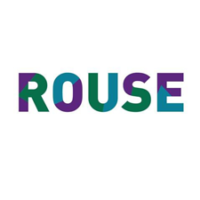Prevent or Cure? “Minimising Risk in the Pharma Supply Chain”
March 7, 2017

“Minimising Inventory-holding Risk in the Pharmaceuticals Supply Chain”
by Paul Canham, 3rd March 2017
In a highly-regulated industry that develops valuable time-sensitive products, such as pharmaceuticals, time costs money. Right from the onset of a product’s commercial lifecycle, time-to-launch will dictate the period for which patent protection can be enjoyed ahead of the possibility of competition from generics for the same formulation. But at least the headline date of patent expiry is (reasonably) well known and clear, and long-term strategies can be developed and executed.
In contrast, at the operations coal-face, we have batches of the product now being manufactured, shipped, stored and consumed by sales on a daily basis, across the globe, with undesired but almost inevitable variations in demand and supply. In this ever-changing environment, a robust approach in terms of process, people and systems/data is required to identify, communicate, manage and hopefully mitigate what stock might be at risk of not being sold due to low shelf-life. Moreover, this is not just the domain of the Supply Chain department, but involves a cross-functional process that includes Sales, Marketing, Finance, Warehouse, Logistics, as well as Supply Chain.
Accelerate Evolution has been helping to equip a FTSE100 client to identify and manage proactively these risks across many of its International Markets, with the ultimate goal being of course to mitigate and eliminate the risk ahead of time, and thereby avoid the financial, environmental and supply chain impacts of writing off stock.
From a systems perspective – in the absence of an over-arching ERP solution being available – a robust and fiendishly powerful tool was developed (yes, in Excel) and implemented in regional planning hubs across the globe to:
- Hold a limited set of SKU characteristics, including ‘Who’ is accountable for the SKU’s inventory, its standard cost, and the ‘saleable date’ or ‘use-by’ time-limit, e.g. 60 days before Expiry.
- Receive detailed batch data for stock-on-hand, including its Expiry dating, and the latest approved sales forecast from S&OP. Optionally also the ability to include pending receipts, such as Goods In Transit.
- Simulate the consumption of inventory by demand on a First Expiry First Out (FEFO) basis
- Quantify in volume and value terms the calculated Stock-At-Risk, i.e. what is predicted to be unsold once the saleable or use-by date is reached
- Allow for business or market intelligence adjustments to be applied, including where mitigations have been identified (e.g. to sell more) or where the risk has been accrued for already in the financials.
- Last but not least, to capture the root-cause to support subsequent analysis and continuous improvement for future cycles, as well as mitigating actions that will be taken in current cycle.
Whilst definitely important, this tool is just one part of a monthly, standard business process during which the risks are identified, mitigations proposed, supply chain plans or parameters updated, financials adjusted, and final results approved at regional and then global governance.
The people involved in the process work to a pre-defined RACI (defining Roles & Responsibilities) and operate to a standard drumbeat that is defined by and aligned to both periodic S&OP (Sales & Operations Planning) and financial reporting cycles.
Although it’s an ongoing journey, no longer do we get surprised by inevitable surprises!
Sales departments understand where extra focus is needed to liquidate stock, rather than selling what has just landed. Finance and Supply Chain agree on the rules for provisioning and what is actually provisioned. Factory Leads can be challenged with meaningful root-causes to review MOQs and lead-times. Marketing understands the implications of any ongoing over-forecasting on the bottom-line. Country Management sees and understands the upsides and downsides posed by this topic on their P&L projections.
Whilst the approach was originally scoped to include only finished goods inventory, several of the client’s regional and global manufacturing sites are now also adopting the model to get a broader, end-to-end picture allowing them to manage raw materials inventory more effectively.
Longer-term the roadmap aims at incorporating the functionality and business process fully back into the core ERP, however, even with the current low-tech approach, the client has already made savings in excess of 2m GBP in a single one of their International Markets’ regions, as a direct benefit of pro-active management of stock-at-risk.
That’s a pretty good return on investment which Accelerate Evolution is very pleased to have helped deliver!
Contact us to find out more about how we can best help your organization design, deploy and/or run an impactful and effective inventory risk management program.
Popular Tags
- business operations management change management coaching & training commercial operations management Finance & GRC GEIT human capital management Information Technology interim management IT Governance Legal management advisory Marketing & Positioning project management Regulatory strategy & business transformation supply chain & logistics



























